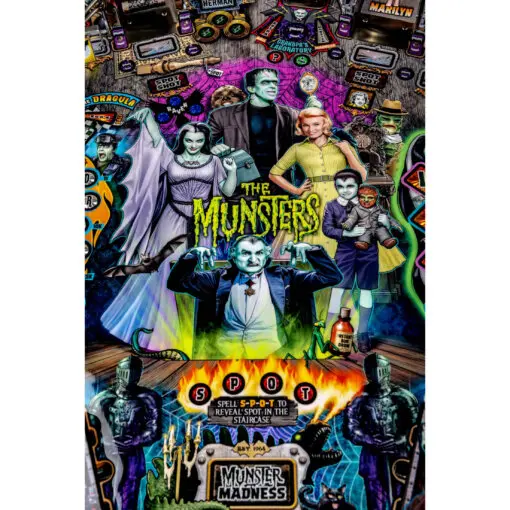
The Enduring Benefits of Owning a Vintage Pinball Machine
More Than a Game: Collecting a Slice of Arcade History
The allure of a vintage pinball machine goes far beyond the flicker of its lights and the slam of the flippers. These aren’t just games; they are tangible pieces of history, mechanical marvels, and cultural artifacts that represent the golden age of arcade entertainment. While modern machines boast deep digital rule sets and massive LCD screens, the charm of an older electromechanical (EM) or early solid-state (SS) table is irreplaceable.
For the serious collector, the nostalgic enthusiast, or the interior design connoisseur, owning a vintage pinball machine offers a unique set of benefits that modern tables simply cannot match. This is the definitive guide to why you should consider a classic for your home arcade.
The Irresistible Vintage Pinball Benefits (Over 300 Words)
1. Unmatched Collectible Value and Potential Appreciation
Unlike many consumer electronics that depreciate the moment they leave the store, select vintage pinball machines—particularly those from the 1970s and 80s—have proven to be exceptional storehouses of value. Rare titles, iconic themes, or machines with very low production runs often appreciate significantly over time. For example, legendary machines from manufacturers like Williams, Bally, or Gottlieb in good cosmetic condition are highly sought after by collectors worldwide. While the primary reason to buy is enjoyment, the potential for a vintage pinball to be a “bank account you can play” is a major benefit over modern luxury purchases.
2. Superior Artistry and Aesthetic Appeal
The artwork on vintage tables is a true art form. Before digital printing and complex computer graphics, the backglasses were often hand-painted and the cabinet designs reflected the vibrant pop culture, comic book styles, and cultural themes of their era.
- Hand-Drawn Backglass: The stunning, often airbrushed art creates a focal point in any room.
- Thematic Cohesion: The artwork, playfield, and sound effects are all tightly integrated, creating an instant mood.
A classic machine serves as a unique, three-dimensional piece of functional art, transforming any game room, basement, or living area into a unique, nostalgic space.
3. Pure, Tactile Mechanical Gameplay
The primary appeal of vintage pinball lies in its unadulterated, skill-based mechanics. Older electromechanical (EM) machines (pre-1978) rely purely on physical relays, solenoids, and stepper units for scoring and game logic. This provides a raw, satisfying, and vintage gaming experience:
- Simple, Pure Rules: The focus is on flipper skill, shot accuracy, and ball control, rather than complex digital modes.
- Satisfying Feedback: The sounds are real bells, chimes, and buzzers, providing an authentic, tactile rhythm that digital sound effects cannot replicate.
This simpler design often makes them approachable for new players, who can immediately grasp the game’s objectives.
4. Easier DIY Maintenance (Pre-DMD Era)
While all pinball machines require maintenance, older, early solid-state (SS) and EM models can sometimes be more forgiving for the home user. Their inner workings are often less intimidating:
- Fewer Complex Electronics: There are fewer proprietary circuit boards and complicated wiring harnesses compared to modern machines.
- Focus on Mechanics: Most issues involve cleaning, lubricating, and replacing standard mechanical parts like rubbers and coils, which is a manageable and rewarding DIY process for many enthusiasts.
Owning a vintage pinball allows you to connect with the machine on a mechanical level, offering a fulfilling maintenance hobby alongside the gameplay itself.
Conclusion
Choosing a vintage pinball machine is a decision to invest in nostalgia, artistry, and timeless gameplay. The benefits are clear: financial upside, stunning aesthetics, and a pure, challenging mechanical experience that connects you directly to the golden age of the arcade. It’s an investment that pays dividends in both joy and collectibility.
